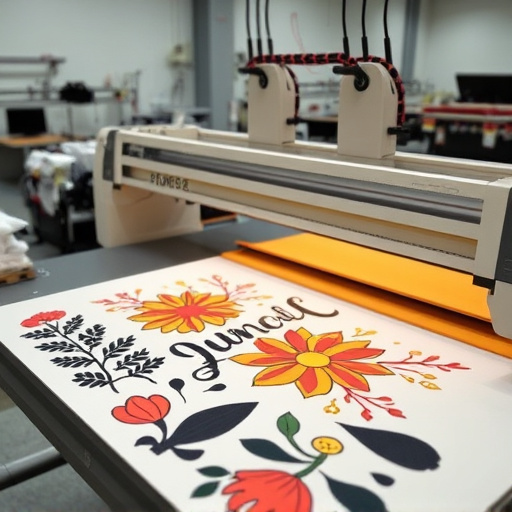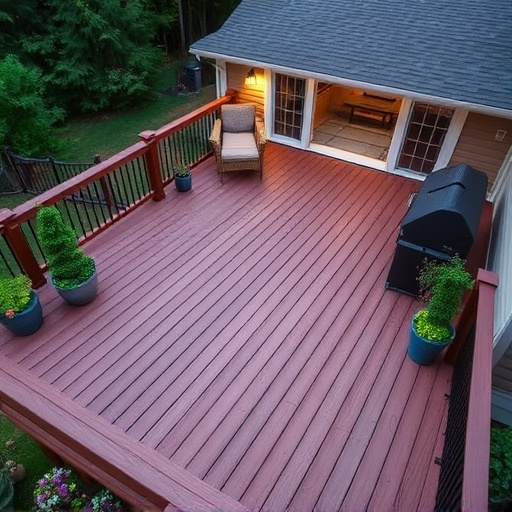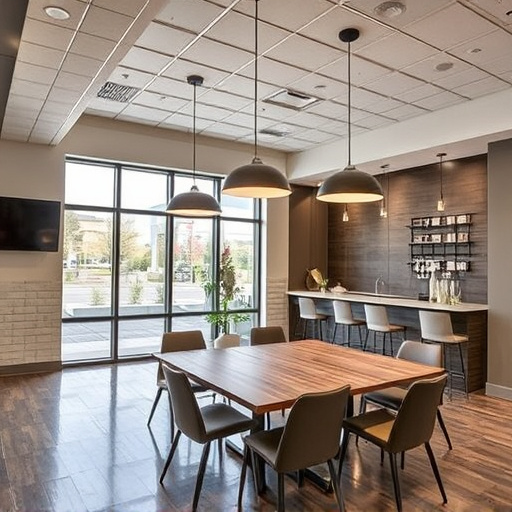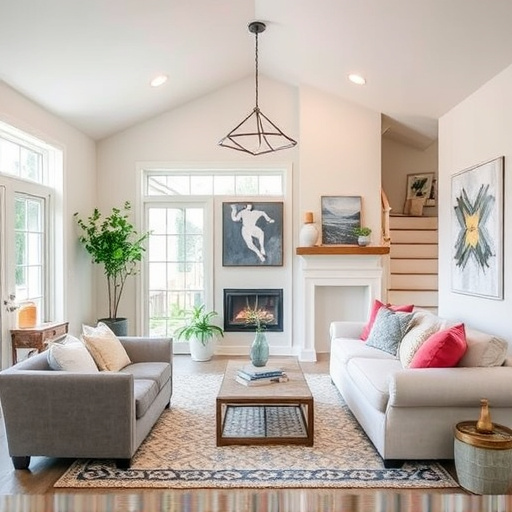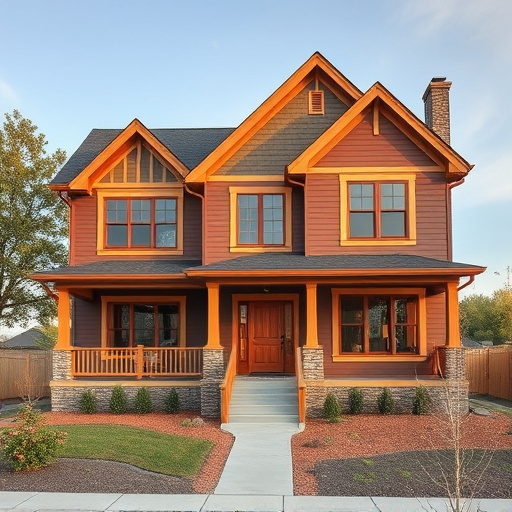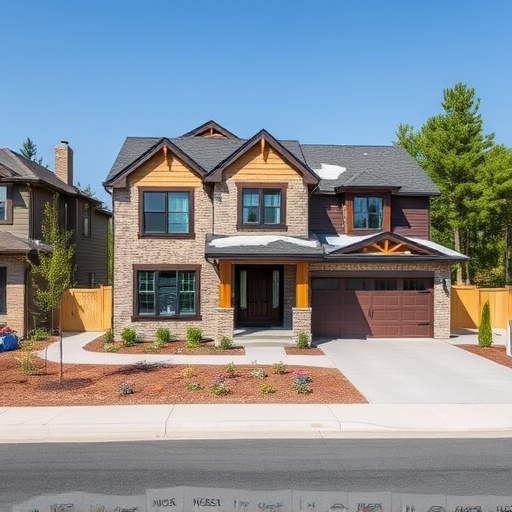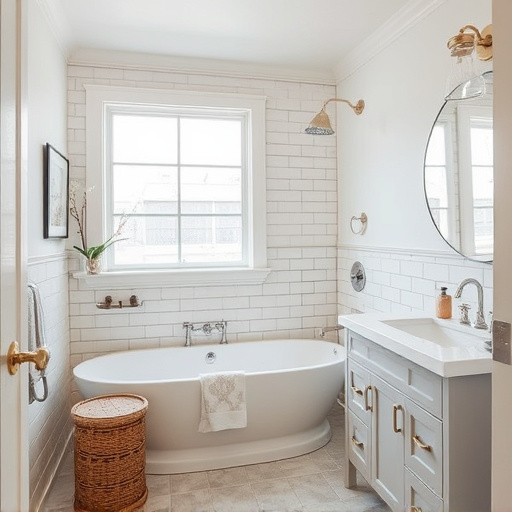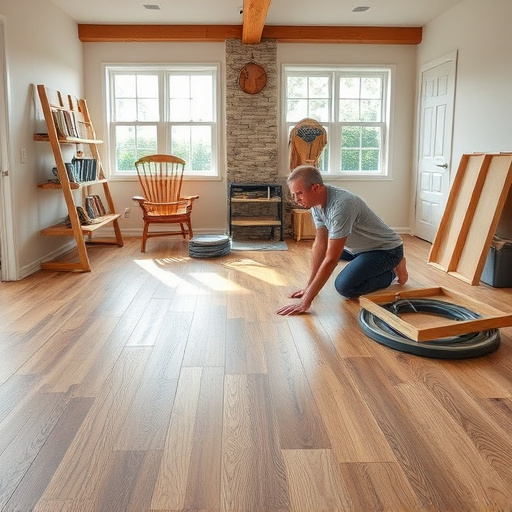In open concept home interiors, color theory guides aesthetic and functional design. Complementary colors create contrast, warm tones in kitchens, cool in bedrooms. Material and texture consistency maintain unity across spaces. Strategic furniture placement balances expansive areas while built-in storage enhances integration of functional zones.
Creating a cohesive look in open concept home interiors can be achieved through strategic decor matching. This article offers valuable tips on navigating these spaces, focusing on color theory for harmonious schemes, material and texture consistency, and balancing large areas with thoughtful placement. Discover how to transform your home interiors into serene, inviting, and stylish environments that reflect your unique taste.
- Understanding Color Theory for Harmonious Schemes
- Material and Texture Consistency Across Spaces
- Balancing Large Open Areas with Strategic Placement
Understanding Color Theory for Harmonious Schemes
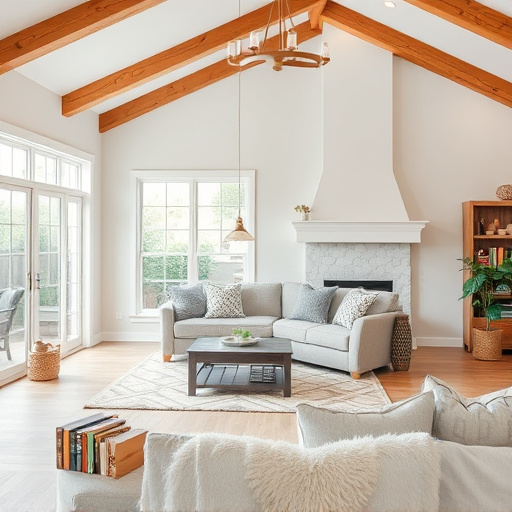
In the realm of open concept home interiors, where spaces flow seamlessly into one another, achieving a cohesive decor scheme is paramount. Understanding color theory forms the crux of this endeavor. Colors are categorized along a spectrum, from warm hues like red and orange to cool shades like blue and green. Combining complementary colors—those situated opposite each other on the spectrum—can create vibrant, striking contrast. This harmonious blend can instantly transform a space, making it more inviting or serene, depending on the desired atmosphere.
When crafting a decor scheme for your kitchen renovations or bathroom remodel, consider color’s psychological impact. Warm tones often evoke feelings of energy and comfort, perfect for social hubs like kitchens and living areas. Cool colors, in contrast, promote calmness and relaxation, suitable for bedrooms or tranquil bathrooms. Balancing these elements can result in stunning home interiors that cater to both functionality and aesthetics, ensuring every room tells a cohesive visual story within the larger narrative of your home.
Material and Texture Consistency Across Spaces
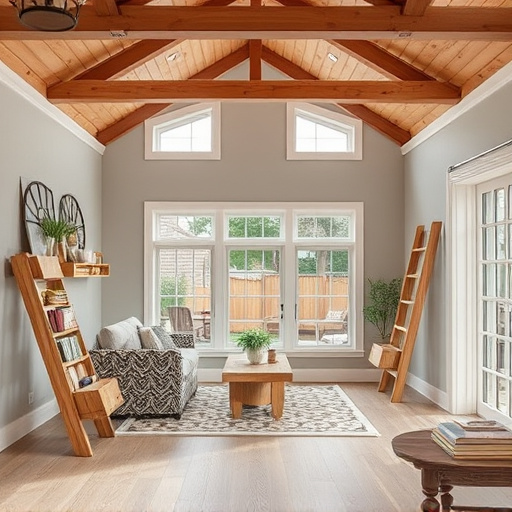
Creating a seamless flow between different areas is essential when it comes to open concept home interiors. One effective way to achieve this is by maintaining material and texture consistency across spaces. This means selecting materials that complement each other throughout your entire home, from hardwood floors in the living room to the same type of tiles in the kitchen. By keeping these elements cohesive, you establish a unified aesthetic that makes each space feel connected.
During a multiple room remodel or whole house remodel, like a kitchen remodel, paying attention to textures is equally crucial. For instance, if you choose suede-like upholstery for your sofa, consider using similar tactile materials in nearby areas such as throw pillows, blankets, and even curtains. This subtle harmony ensures that the overall look remains balanced and inviting, allowing each room to contribute to a cohesive home interior design without feeling disjointed.
Balancing Large Open Areas with Strategic Placement
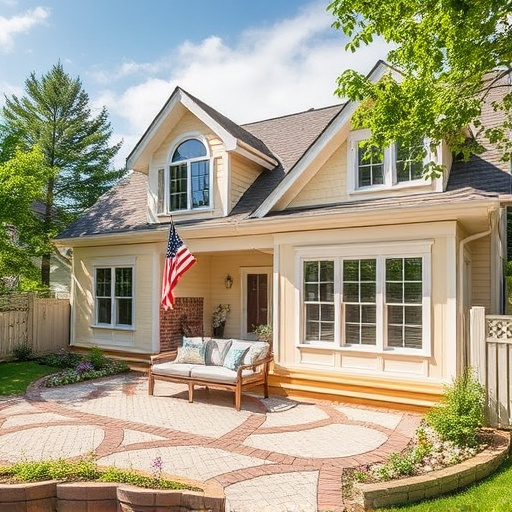
In open concept home interiors, balancing large open areas is key to creating a harmonious space. To achieve this, strategic placement of furniture and decor becomes essential. One effective strategy is to divide the area visually using low-profile furniture like accent chairs, small bookshelves, or even rugs. This breaks up the expanse without blocking natural light or creating a claustrophobic feel. Incorporating these elements in key locations can help guide the eye and make the space appear more balanced.
Additionally, when designing an open concept, consider integrating functional areas such as kitchen and bath seamlessly into the overall aesthetic. Renovation services can play a crucial role here by thoughtfully adding architectural details or built-in storage to tie these spaces into the broader home interiors. Whether through new construction or thoughtful home additions, balancing large open areas with strategic placement ensures that your home remains inviting, functional, and visually appealing.
In open concept home interiors, achieving a cohesive aesthetic requires a thoughtful approach. By understanding color theory, maintaining material and texture consistency, and strategically placing furniture in large spaces, you can create a visually appealing and harmonious environment. These tips serve as a starting point for matching decor in modern living spaces, ensuring your home interiors tell a unified story.




